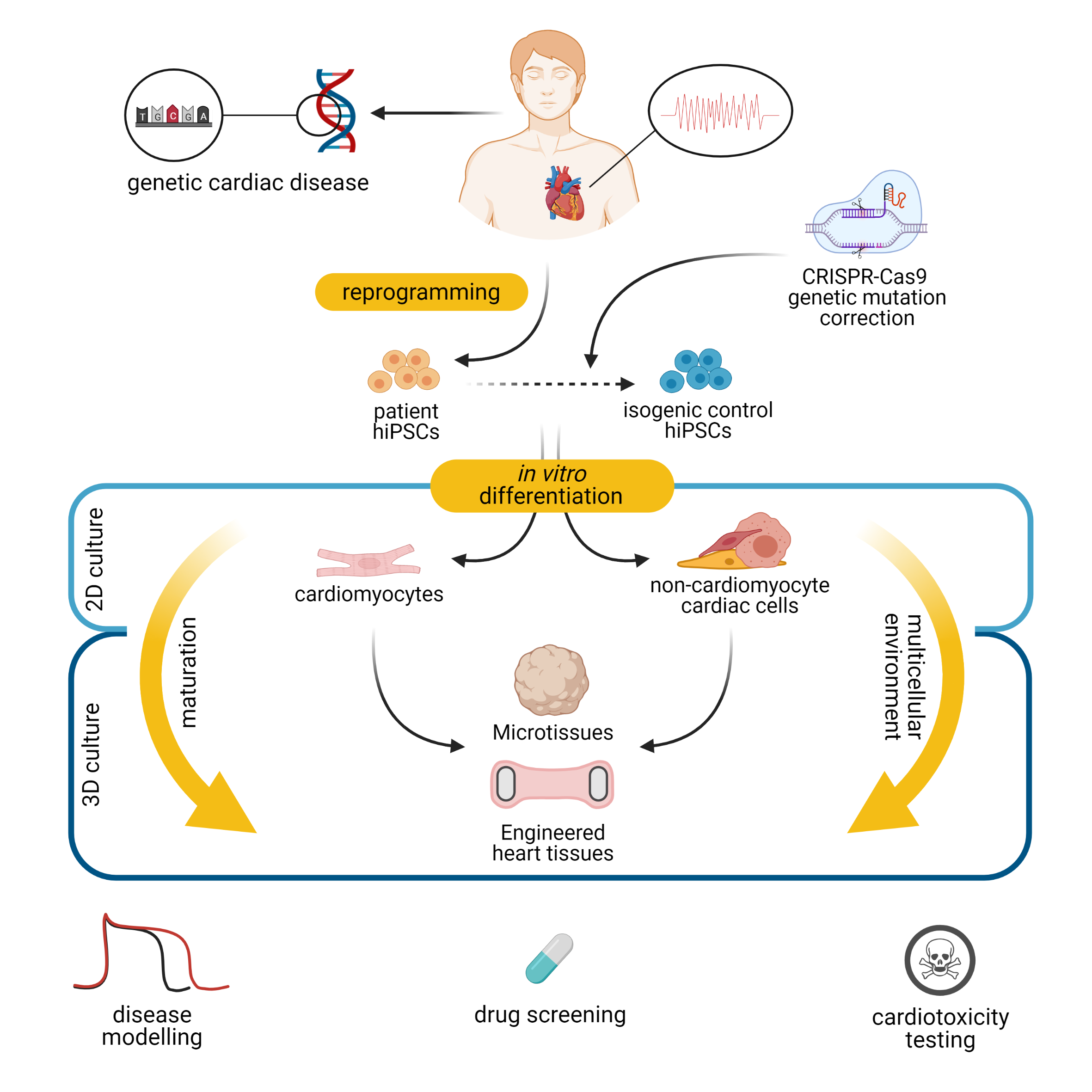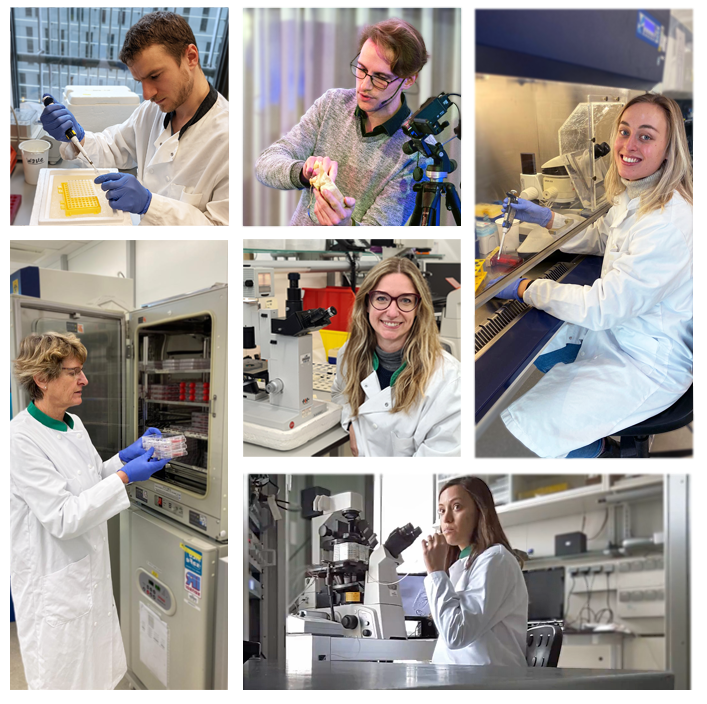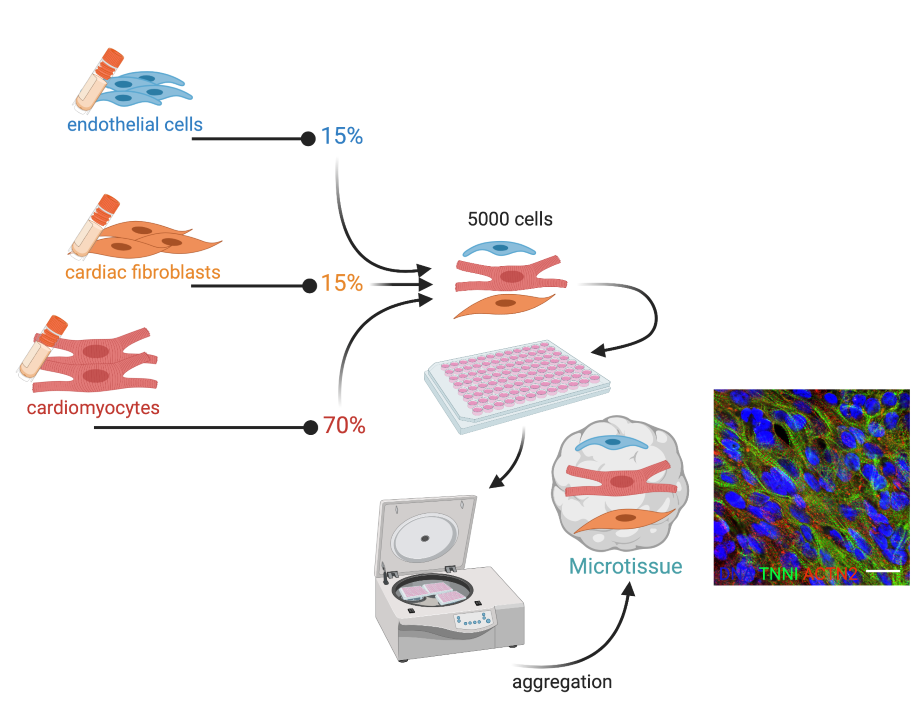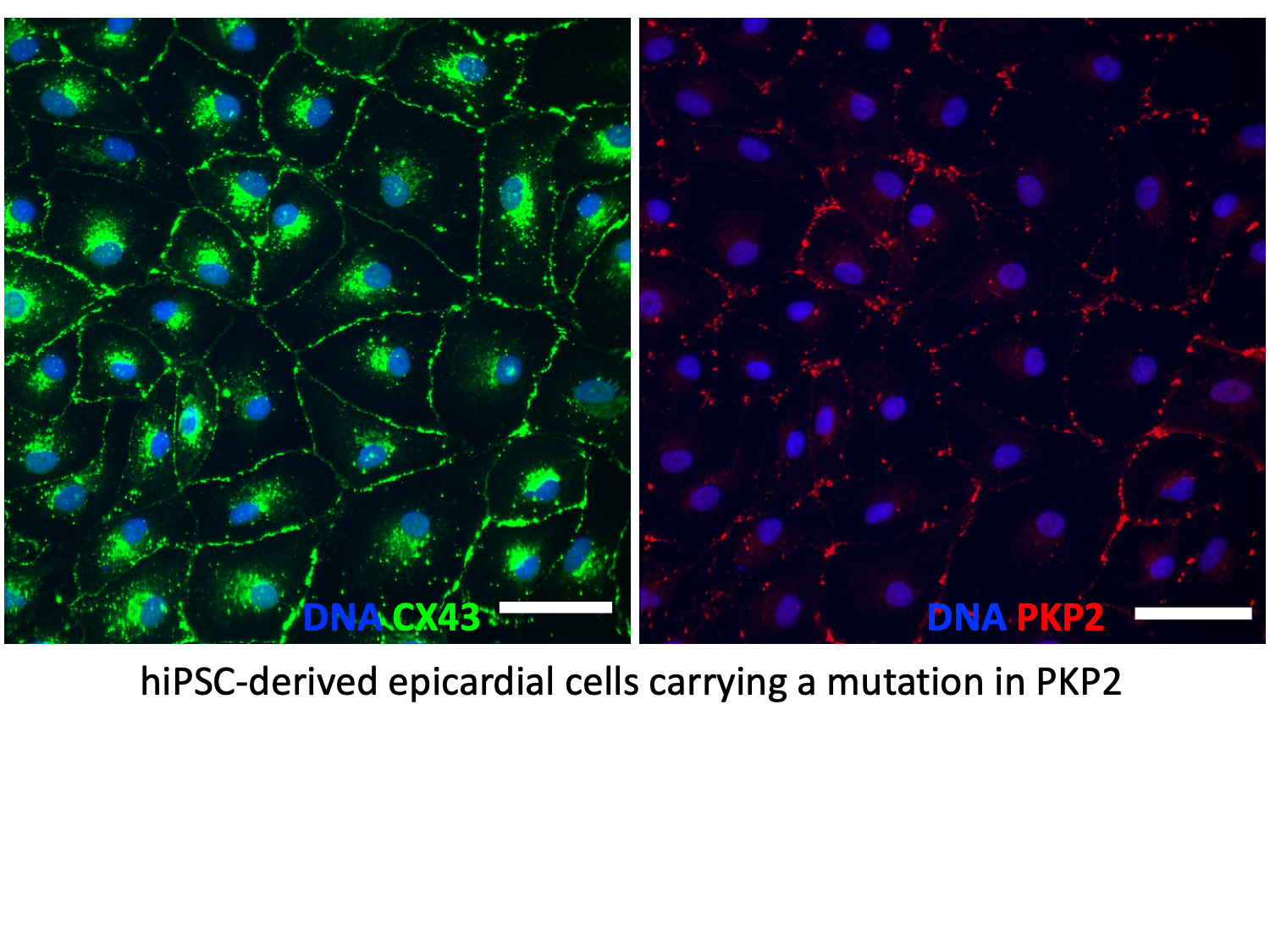Bellin Group – Human Pluripotent Stem Cells for Modelling and Correcting Inherited Heart Disease
Human iPSCs for cardiovascular diseases
We use human induced pluripotent stem cells (hiPSCs) to model and study the genetic causes of cardiovascular diseases (Figure 1). hiPSCs can be differentiated in contracting cardiomyocytes that we use to discover the molecular mechanisms underlying cardiac arrhythmia. We also develop hiPSC-based platforms for drug-screening and safety pharmacology, to identify active cardio-active compounds able to rescue disease phenotypes but also to identify molecules with cardiotoxic effect. Finally, we use hiPSCs to generate three-dimensional cardiac microtissue models.
Cardiac microtissues
The heart is a complex tissue composed by several cell types including cardiomyocytes, endothelial cells, smooth muscle cells, fibroblasts and other connective tissue cells. We are using hiPSCs to develop 3D-cardiac microtissue constructs comprising both cardiomyocytes and non-myocyte cells to more accurately reproduce the multicellular organization and the dynamic function of native heart (Figure 3). These constructs will assist cardiovascular disease modelling and drug screening.
Projects
Themes for innovation and Societal Outreach
Key publications
Our team
- Dr. Milena Bellin (Group leader)
- Dr. Giulia Campostrini (Postdoc and Marie-Curie fellow)
- Dr. Viviana Meraviglia (Postdoc)
- Ruben van Helden (PhD student)
- Jeroen Stein (PhD student)
- Laura Windt (PhD student)
- Dorien Ward van-Oostwaard (Research technician)
&width=2362)
&width=707)
&width=924)
